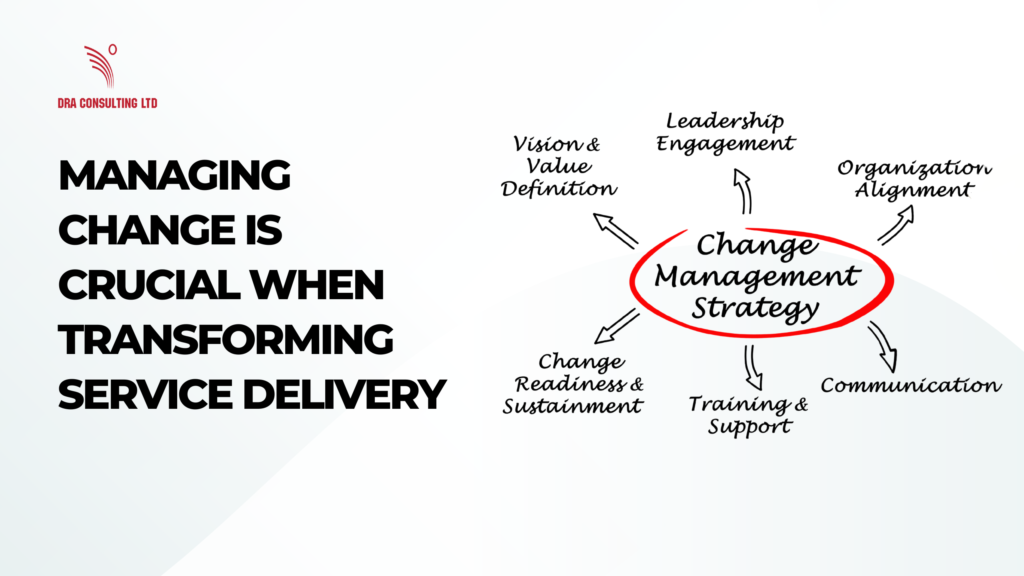Change can be both exciting and challenging for individuals. There’s excitement, coupled with the onset of fear, uncertainty, disequilibrium, and a general imbalance due to the disruptive experience. When a business decides to launch its new service delivery and customer experience transformation journey, this can send its employees into a state of exhilaration (for the adventurous souls), or into a state of dis-ease that can generate excessive anxiety. It all depends on how the change is orchestrated.
The businesses that understand the rudiments of change management, are those that take a people-centric approach to designing their rollout strategies and a congruence-based approach to ensuring that all of the moving parts are synchronized.
Managing change is pretty much like a speaker delivering a business presentation. The rule of thumb for delivery is, “tell the audience what you’re about to tell them, tell them and then tell them what you just told them.” Basically, this means that you explain the presentation up front, deliver the presentation and then summarize the key points, before closing off.
When a business decides to launch its new service delivery and customer experience transformation journey, this can send its employees into a state of exhilaration, or into a state of dis-ease that can generate excessive anxiety. It all depends on how the change is orchestrated.
When managing change, it is imperative to ensure that the key stakeholders know, up front, what changes will occur, the timelines if known, the expected impact on their lives and what adjustments will be expected on their part. The before, during and after of the cycle of change, similar to the presentation format.
I can’t tell you how many times I’ve encountered corporate situations where transformation projects were launched and employees had to read about the details of the projects in the news, like everyone else. The change management element was deficient. Of course, this is somewhat of an extreme case, but the point that I want to make is that nothing kills employee enthusiasm out of the starting block, more than a tone-deaf start.
Additionally, the very nature of service delivery transformation means that its scope has to be organization-wide. Unfortunately, many projects fall short of this level of penetration. One of the reasons is because many business leaders have bought in to the mistaken belief that training and transformation are interchangeable elements.
When managing change, it is imperative to ensure that the key stakeholders know, up front, what changes will occur, the timelines if known, the expected impact on their lives and what adjustments will be expected on their part.
It is believed, widely, that just exposing frontline staff to training will transform the business into a culture of service. Nothing could be further from the truth. This limited exposure cannot achieve the results that are only possible from placing the entire business within the change crucible.
Onboarding and navigating a service delivery or customer experience transformation project skillfully, requires guidance from a seasoned change management team. As we know, it takes a village to raise a child. Well, when it comes to transformation, it takes a team, trained to an almost “navy seal” level to direct and manage the execution successfully.
Let me share some thoughts on one of the most pivotal elements within the management of change… the communications process.
It is believed, widely, that just exposing frontline staff to training will transform the business into a culture of service. Nothing could be further from the truth.
It bears reminding that the transformation cycle begins long before the “actual” transformation. As soon as the decision to activate the shift is taken, that’s the moment that the cycle begins. It’s also one of the most critical moments in which a single messaging strategy should be defined, to minimize confusion, present a united narrative to the public and initiate the process of synchronizing the moving parts of the project.
A clearly-defined and coherent communications strategy is needed to ensure that a parallel universe of disinformation is not spawned, because of a deficit of information from official sources within the business. A diverse suite of channels that engage stakeholder groups, especially the employee community, should be utilized to create and sustain informed audiences.
So, who champions this process? Well, several internal agents. There’s the official source or designated spokesperson, then there’s the designated technical committee as the “go-to” subject-matter experts and finally, there’s a designated leadership team that speaks on to the corporate strategy.
Onboarding and navigating a service delivery or customer experience transformation project skillfully, requires guidance from a seasoned change management team.
Notwithstanding the existence of a blueprint for who, what, how, when and where communications content will be activated, the trustworthiness of the utterances will rely heavily on the credibility of the leadership team throughout the journey. This is where what the leaders say and what they do must be congruent, or the “believability quotient” surrounding the project will decline to zero.
It is said that change management programs fail for human reasons. If a business is planning on achieving a successful transformation, it seems to me that placing people at the centre of the process would be a good move.

